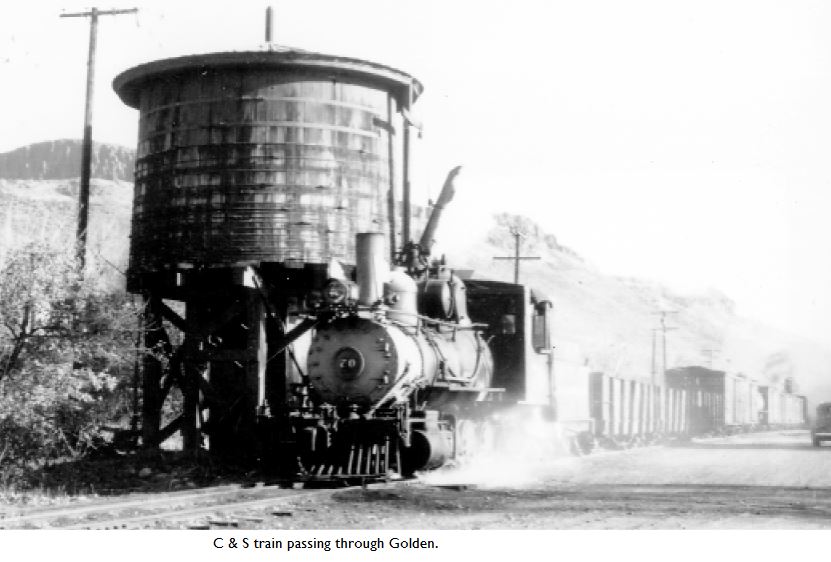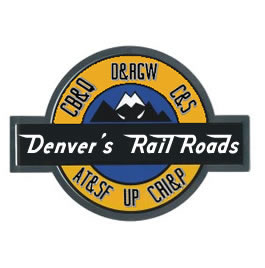Background
Back in 2012 Atlas announced a new run of N scale
Shay locomotives, including one lettered for the Argentine Central
Railway (AC). The AC ran from Silver Plume, just west of Denver,
CO, to the Waldorf Mining and Milling Company and on to the summit
of Mount McClellan. I was pretty taken with both the Shay
locomotive and the AC as a railroad and started to build a stand alone
10' x 4' layout based around the Atlas Shay's and a number of Athearn
2-6-0s and 2-8-0s I had purchased. Track laying on the AC was commenced
in 1902 and abandoned in 1919, but I figured that the railroad could
have continued into the 1930s and 1940s and even been converted to
standard gauge. However although I had plenty of steam locomotives to
run the layout they were all DC powered and just too small to be
converted to DCC.
Fast forward to 2016 when the three Atlas Shay's I had ordered,
lettered for the Argentine Central, finally arrived. By then
I had moved house, acquired a 4 car (48' x 18') garage just for my
model railroad, started work on the 37' x 13' Denver's RailRoads
layout, incorporated the AC layout into the main layout as a branch
line starting at Golden, CO and most importantly decided to only
operate the layouts by DCC.
So my Shays, 2-6-0s and 2-8-0s had to go and although
Model Power had released a 2-6-0 and a 4-4-0 with DCC and sound the
Argentine Central Railway was built around the Shay locomotive.
Furthermore the track plan did not quite flow as between Golden and
Waldorf (the first town on my AC layout) was the station at Silver
Plume and the Georgetown Loop. Both of these scenic attractions
needed to be built in order to have a creditable AC layout.
Today
However I had already built the town of Golden and the first
phase of the climb up the branch line so I did not want to abandon
the layout and waste all my effort to date. So I started to research
for alternative scenarios and that search lead me to the SPV
Colorado & Utah Comprehensive Railroad Atlas and there on
page
16 was the railway line from Denver to Golden and details of a
number of branch lines running from and to Golden in the late 1800s,
including lines to Dry Creek, Murphy Mine, Ralston, Glencoe, Leyden
Jct., Ruby Quarry and Chimney Gulch. Further research on the
internet identified the Loveland coal mine, Tindale coal mine and
White Ash Coal Mine as being in the vicinity of Golden and the
branch line to Ralston, Glencoe and Leyden.
My problem was solved
by changing the branch line from Golden from the
Argentine Central Railway to the Golden and Ralston Railroad (GRR).
As the AC layout had a number of mainly ore mines I had
planned for several small mines and already had the kits, which
fitted in nicely with the number of mines in the Golden vicinity.
Furthermore the Golden and Ralston Railroad was owned by the
Colorado Central Railroad which in turn became the Colorado &
Southern Railroad (a subsidiary of the
Chicago, Burlington & Quincy Railroad) and the aforementioned
Model Power 2-6-0 and 4-4-0 Locomotives (with DCC and sound) were
available with CB&Q lettering.
Although the real GRR only ran from 1877 to 1898 my layout
assumes that the branch continued into the 1950s & 1960s and was
ungraded to standard gauge in the early 1930s. The layout can be
operated as a stand alone mining branch, set in the 1930s with
billboard reefers and steam locomotives, or as part of the 1950/60s
Denver's Railroads with more modern equipment and diesel
locomotives.
Dennis Turner. July 3, 2017

C&S #76 with train passing through Golden, CO. ©
Colorado Railroad Museum
History
Althought the internet is a surperb source of information it is still a
long way behind that that is contained in books. I have a large library
of both prototype and modelling books and I am often surprised to find
that after a fruitless Google search that I actually have the
information I want in one of my books. The history of the Golden
and Ralston Railroad (GRR) is a case in point. I could only find obscure
references to mines around Golden on the Internet, but on checking
through my books I found the following short history of the GRR in the
Colorado Rail Annual number 10 "Narrow Gauge to Central and Silver
Plume" by Cornelius W Hauck:
..."a project called the Golden & Ralston
Railroad, about which the Golden Transcript had quoted
Berthoud in February 1877:
“Capt. Berthoud informs us that he expects
to commence operations during the present week upon the proposed new
railroad from Golden to the coal mines on Ralston Creek some 4 or 5
mi les north of here. The backers of the enterprise are an English
company, and the road is to be narrow gauge, costing some $7000 per
mi le including rails. There will be a heavy grade near town between
North Table Mountain and the canyon that will average 100 feet to
the mile for a short distance … the object of the road is to haul
coal from the mines on Ralston Creek to the Colorado Central line
and thence to the mountain towns or Denver.”
Before this line could be built as an
independent railroad, the revitalized Colorado Central took an
interest in it. The realization that the route would almost
intersect the CC's Longmont line about 4 1/2 miles north of Golden
Junction suggested the idea that if Longmont trains were r un
through Golden and over this line north the awkward and costly stub
runs between Golden Junction and Golden could be eliminated .
Preliminary surveys of the line were made in June and July but the
rail road became completely absorbed in construction of a standard
gauge extension from Longmont north through Ft. Collins to Cheyenne
during September, October and November and nothing was done on the
Ralston cut -off.
By November the railroad was ready and grading began on the new
route. When the grade was in readiness, elaborate plans were made to
change the existing track between Golden Junction and Leyden Gap, on
the north side of Ralston Creek, to the new grade. The last train
went over the old line on Saturday, February 22. 1878 and Sunday
trains were cancelled. Immediately two gangs started tearing up the
track, beginning at the center of the line; the materials were then
carried around to the new grade and relaid there as rapidly as
possible. It had been hoped that the new line would be finished in
time for the Monday morning train, but this proved impossible to
accomplish, and the first train to use the line was the Tuesday
morning train. The Golden Globe observed that "the change is an important one for the rail
road company itself, as well as for Golden" and that it would
result in significant economies "as well as many other
conveniences" - that is, it would put Golden on the main line!
The original objective was not lost sight of,
and a third rail was laid for about 4 miles, to "Dry Creek", to
accommodate narrow gauge trains of the Golden & Ralston. In March
this road had laid two miles of its own line to reach the Murphy
Mine on Ralston Creek. Owned by Knox and Clements, and frequently
called the Knox Railway, the little road claimed to own a
locomotive, passenger car, and a "number of" coal cars.
However, it appears to have been in operation only a short time; by
August, 1879, the Globe was commenting that a part of the "Knox
Railway branch" was to be relaid to standard gauge to reach a
quarry, and another report claimed that the "old 35 pound rail
from Knox's 4 mile abandoned coal mine spur at Golden" was used
on the Denver Circle Railroad (another Loveland project) in 1880. A
"Golden & Ralston RR" incorporated in February, 1884, seems to have
been an entirely different company.
Another nearby project of 1883 was the Colorado
Central's subsidiary, the Denver & Middle Park. This UP-backed
narrow gauge ran from Ralston to some mines at Glencoe, about 4 1/2
miles. When the CC line north of Ralston was abandoned in 1889,
after completion of the new Denver-Boulder line, the CC continued to
operate narrow gauge trains from Golden to Ralston and Glencoe until
the branch was abandoned about 1898. Little of the history of these
coal mine spurs in the Golden area has been documented, as they were
often unpretentious and temporary."
©
1972
Colorado Railroad Museum.


